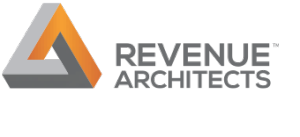Our Inbound Marketing programs are designed to attract buyers searching for your product or service. With search-optimized web pages, high-value content, and digital experiences that follow permission marketing principles, Inbound Marketing programs can help you drive more website visitors, convert these leads and subscribers, and nurture them to marketing qualified leads (MQLs).
Content
Content is central to an Inbound program. Search-optimized content (e.g. pillar pages, clusters) helps drive traffic and ‘shiny objects’ like white papers and eBooks) that are valued by prospects can drive conversions. Content can be designed as ‘evergreen’ and updated periodically.
High-value assets are typically gated using an optimized landing page and lead capture forms. Using permission marketing principles and offering an “equitable exchange” of value – helps to convert buyers into qualified leads.
Promotional content may be ungated but may still offer valuable support for a prospect’s self-sell journey. Examples include service brochures, fact sheets, or introductory content.
Search Engine Optimization (SEO)
SEO helps make pages more visible to visitors searching for key topics. Web pages and content are optimized for keywords and site quality performance using current standards outlined by major search engines like Google.
Blog
A blog will increase a website’s usefulness and search engine visibility. Programs will publish original and evergreen content at regular intervals. The volume should align with resources and ability to execute.
While higher blog post volumes may help increase search visibility, any consistent program will present opportunities for content amplification across social media and increase visibility and prospect engagement.
Paid Search and Paid Social
Paid Search programs include advertising on search engines using pay-per-click (PPC) and Display ads. Retargeting can also be used to stay top of mind with visitors who did not convert. Paid Social advertising on social platforms like LinkedIn, Facebook, and X offer a similar strategy that leverages the deep targeting capability provided by social media.
Paid strategies are built around the prospect’s journey and are sent to conversion-optimized landing pages. Programs are optimized for ROI and cost-per-acquisition, considering the lifetime value of a lead.
Social Media
Social Media amplification and engagement start with social profiles that are up-to-date, optimized, and branded consistently. Social profiles are an additional brand outpost or touchpoint that are often at the top of a search engine results page. With optimized profiles, social posts can be developed for publishing and engagement, and 1:1 engagement. Blog posts and other content can be amplified on social media and hashtags help expand audiences for targeted topics.
Marketing Automation, Calls to Action & Forms
Website conversions use calls-to-action and forms along with email automation. Progressive profiling helps get more information from return visitors. Many marketing automation and sales technology platforms provide this functionality, including HubSpot and SharpSpring, Pardot (MCAE). If no effective platform is in place, we use an objective approach to select help the right solution. SharpSpring is a strong choice for SMB due to its rich functionality and price-performance advantages. MCAE may be the best choice for larger companies committed to using Sales Cloud for sales CRM.
Email Marketing
For subscribers and prospects that provide permission to receive emails, email marketing programs are an excellent way to keep in touch, nurture relationships, and trigger actions. Emails also help progress a prospect’s journey and can be segmented and customized by audience and persona. Emails should be designed and branded to optimize the visual experience and drive click-through conversions and commitment.
